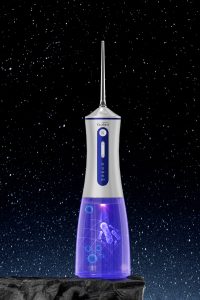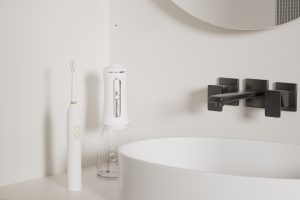A water flosser is a powerful tool for maintaining oral hygiene, but over time, you may notice water pressure decreases, reducing its effectiveness. If your device isn’t performing as strongly as before, here are the most common causes—and how to troubleshoot them.
1. Low Battery Power – Check the Battery Level
Many cordless water flossers rely on rechargeable batteries. If the water pressure decreases, the first step is to check the battery level. A weak battery may not provide enough power for optimal performance. Charge the device fully and test again. If the problem persists, the battery may need replacement.
2. Clogged Nozzle – Clean the Water Head
Mineral deposits, debris, or mold can accumulate in the nozzle, obstructing water flow. To fix this, remove the water head and soak it in warm vinegar or use a small brush to clear blockages. Regularly cleaning the water head ensures consistent pressure and hygiene.
3. Insufficient Water Supply – Check the Water Level in the Water Tank
If the water pressure drops suddenly, check the water level in the water tank. Some flossers have sensors that reduce pressure when water is low. Refill the tank and ensure it’s properly seated to maintain steady flow.
4. Air Bubbles or System Errors – Restart Your Device
Air trapped in the water line or a minor system glitch can disrupt pressure. Try turning off the device, emptying the tank, and restarting your device. This can reset the motor and eliminate airlocks, restoring normal function.
5. Blocked Water Pathway – Check Pipeline Patency
Over time, limescale or debris can build up inside the flosser’s tubing, reducing pipeline patency. To clear blockages, run a mixture of warm water and white vinegar through the system, then rinse thoroughly. For stubborn clogs, use a small pipe cleaner.
6. Worn-Out Motor or Internal Damage
If none of the above solutions work, the issue may be mechanical. A failing motor or damaged internal components can weaken water pressure. If your flosser is under warranty, contact the manufacturer for servicing or replacement.
Final Tips for Maintaining Optimal Water Pressure
Clean the nozzle and tank weekly to prevent buildup.
Use distilled water to minimize mineral deposits.
Store the device properly to avoid internal damage.
By following these steps—checking the battery level, cleaning the water head, and ensuring pipeline patency—you can restore your water flosser’s performance and extend its lifespan.
For more professional dental care product maintenance tips, visit our blog or contact our B2B team for bulk solutions! https://www.powsmart.com/simples/x3-portable-uv-water-flosser/




